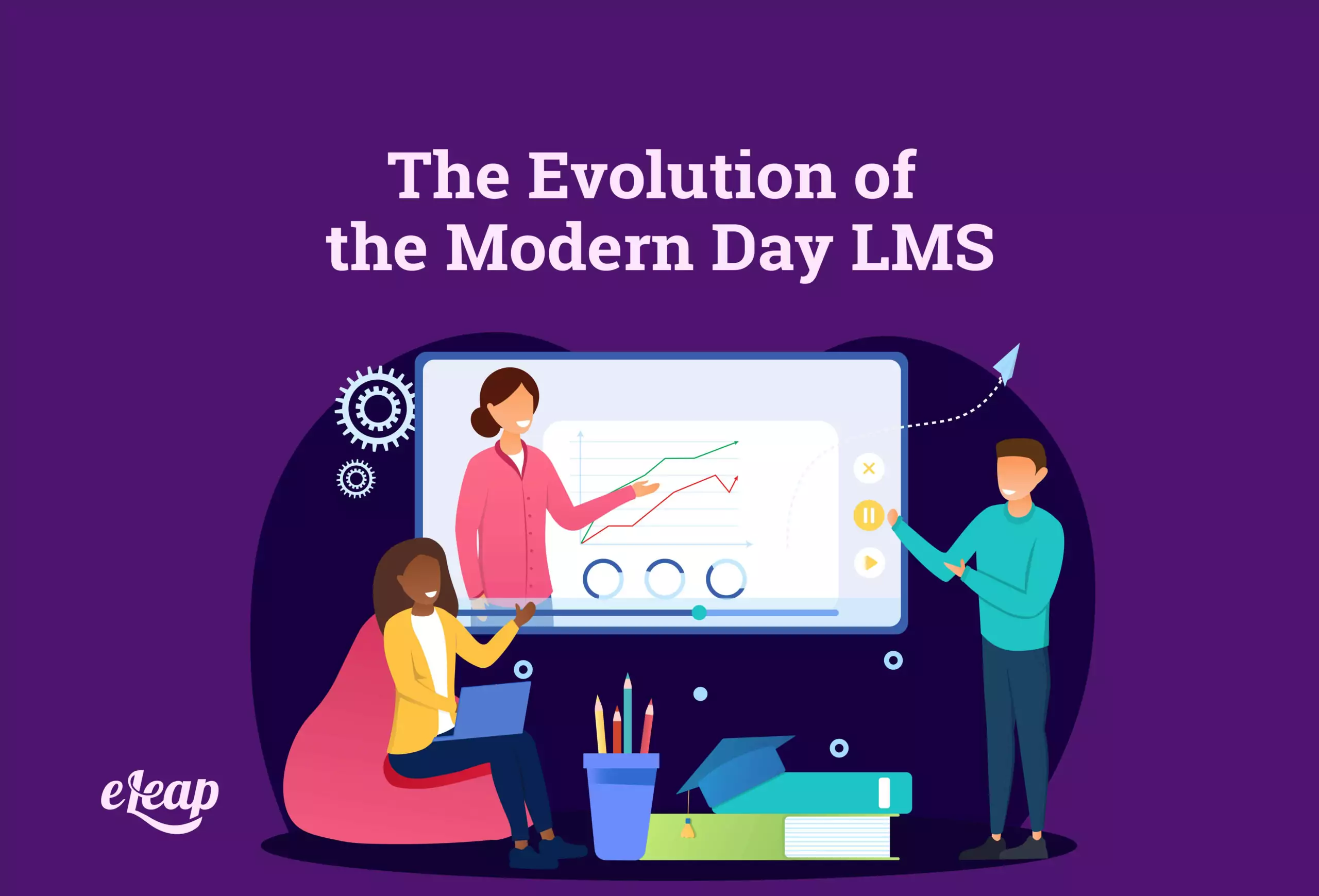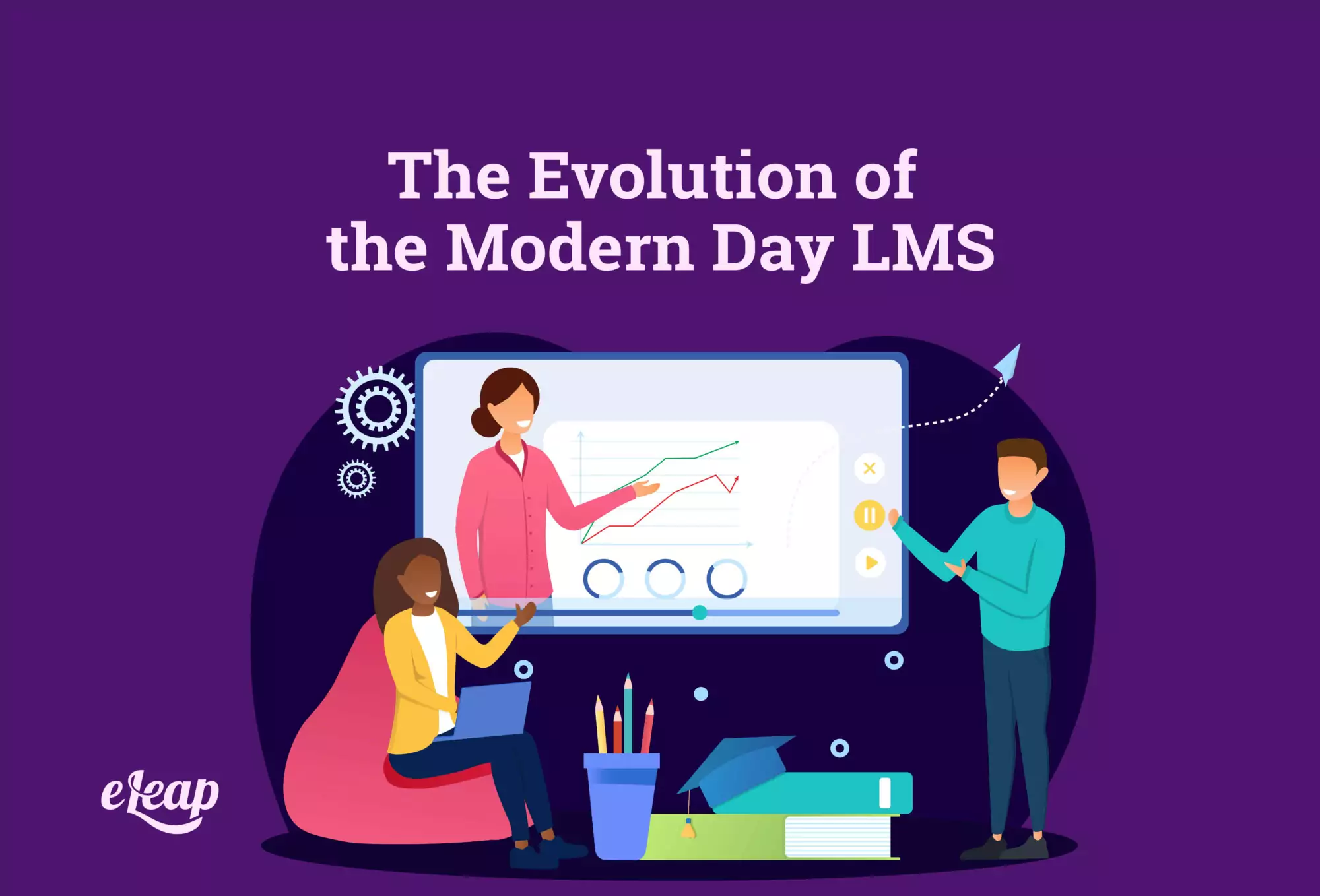The Evolution of the Modern Day LMS

The training and education of employees have been facilitated using Modern Day LMS for quite a while. This modern-day approach to learning has become to go-to choice for the majority of organizations, given the capabilities of the LMS to make learning easier, more efficient, and more accessible.
Given how prominent the LMS has become and how much it has taken off in recent years, many users are left wondering how exactly we got to where we are today with eLearning. Learning management systems have evolved greatly from what they used to be, but like the rest of our world, they are still evolving and growing. As their focus shifted from SCORM to X-API, we’ve seen them become more innovative. Since they became available, hundreds of options have been added. So, where did they come from, and what does the future of the LMS look like? Let’s talk about some of the most important changes in learning management systems.

The Introduction of Accessibility and Flexibility
Until fairly recently, there was little flexibility when it came to how, where, and when learning management systems could be used. As today’s LMS evolves, its accessibility and flexibility have improved drastically. With a module delivery model that allows for mobile access or access on almost any device, learners can complete modules when, where, and in almost any manner they want.
In addition to a shift toward letting learners complete modules whenever and wherever they want, a continued shift to flexibility has been implemented. In comparison to previous methods, this is a radical shift. Training typically used to take place in a dedicated training area, where employees sat at computers and completed their training. They may not have even had access to a computer. Many organizations required a training video to be watched on a TV with no interaction whatsoever.
The learning process has evolved greatly in the past few decades. Now, learners can take these courses anywhere, whenever they want, using any sort of device, and, even better, they don’t even need to be at work to take them. Learners can complete modules on the commute to work, at home, or during their break times. Some smartphones even allow students to take classes, take quizzes, and pass exams. Essentially, learning management has evolved to be accessible, flexible, and convenient.
Better Collaboration and Communication
The shift from a solo experience to greater collaboration and communication is one of the most important changes in learning management. Employees are no longer forced to become isolated in an eLearning environment. This is generally true today, but the LMS of tomorrow will offer many more features, including:
- Group learning allows individuals to complete courses independently but ensures that others are always available for help in real-time.
- The exchange of information and experience between employees through mentoring programs.
- Using online chat rooms, students can exchange ideas with one another, offer assistance, and interact with one another.
- Innovative communication tools that connect learners with each other, such as text messaging and chat programs.
They’re More Personalized
In the world of eLearning, there is also a trend toward personalized, individualized learning experiences. Many organizations are still making the mistake of trying to deliver generic content across the board to all their learners. But good LMSs have evolved to be able to deliver personalized content that adapts to the ways different people learn, making engagement and retention far better for each individual.
As more and more organizations shy away from generic learning experiences, the trend toward better personalization has already begun. In the near future, those who utilize learning management systems will be able to:
- Provide a curated, personalized path for learning to meet the needs of individuals.
- Adapt the learning process to specific requirements, challenges, and needs.
- Ensure accurate learning by providing ready-made resources at any time.
- Provide content that meets not only the needs of the organization but also those of the learners.
- Offer the ability to search for resources and modules so that learners can find them when they are needed.
- Allow learners to progress even when there is no internet connection.
Improved Interactivity
In the past, learning management systems were not an interactive experience. Typically, they only involved watching videos or reading large chunks of text, which usually isn’t very interesting or engaging for the average user. Fortunately, the situation has changed today. The trend toward greater interactivity at all levels of learning is accelerating. Now, we see interactive trends such as gamification and social learning built into learning management systems.
By engaging students and making them active participants in their own learning experiences, interactive advances are changing the eLearning world. As a result, learners are less likely to become bored, and they are more likely to master course material.
The Influence of Analytics and Tracking
The ability to monitor and track the progress of learners is important in any organization. It’s almost impossible to know where and how to help your learners improve, or improve your content if you don’t have access to good analytics. Hard copies of analytics that were tedious and time-consuming to review are a thing of the past with the modern LMS.
With LMSs continuing to advance, they are adopting tools more in line with Google Analytics, where instructors or leaders are able to track which learners have completed what modules, where content might be causing problems, who is behind or might be struggling, and so much more. Modern analytics are accurate, useful, and far easier to decipher than their old, manual counterparts.
As technology advances, the modern-day LMS continues to get better and better. We’ve come a long way from the arduous, boring learning systems of the past, and learning management systems still have even more advancing to do. Fortunately, our ability to keep learners engaged and improve retention, as well as make sure content is accessible and interesting, is continuously improving.